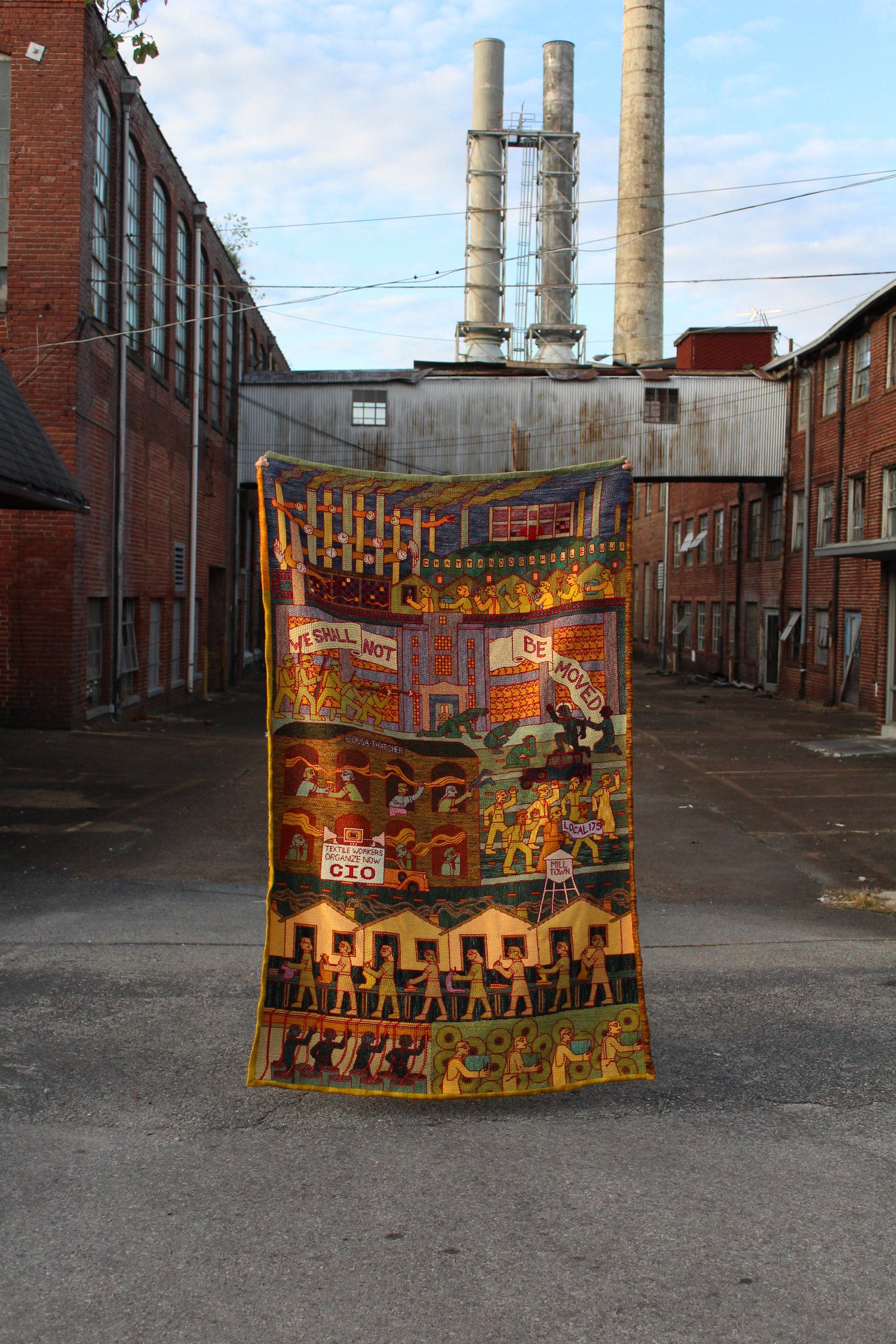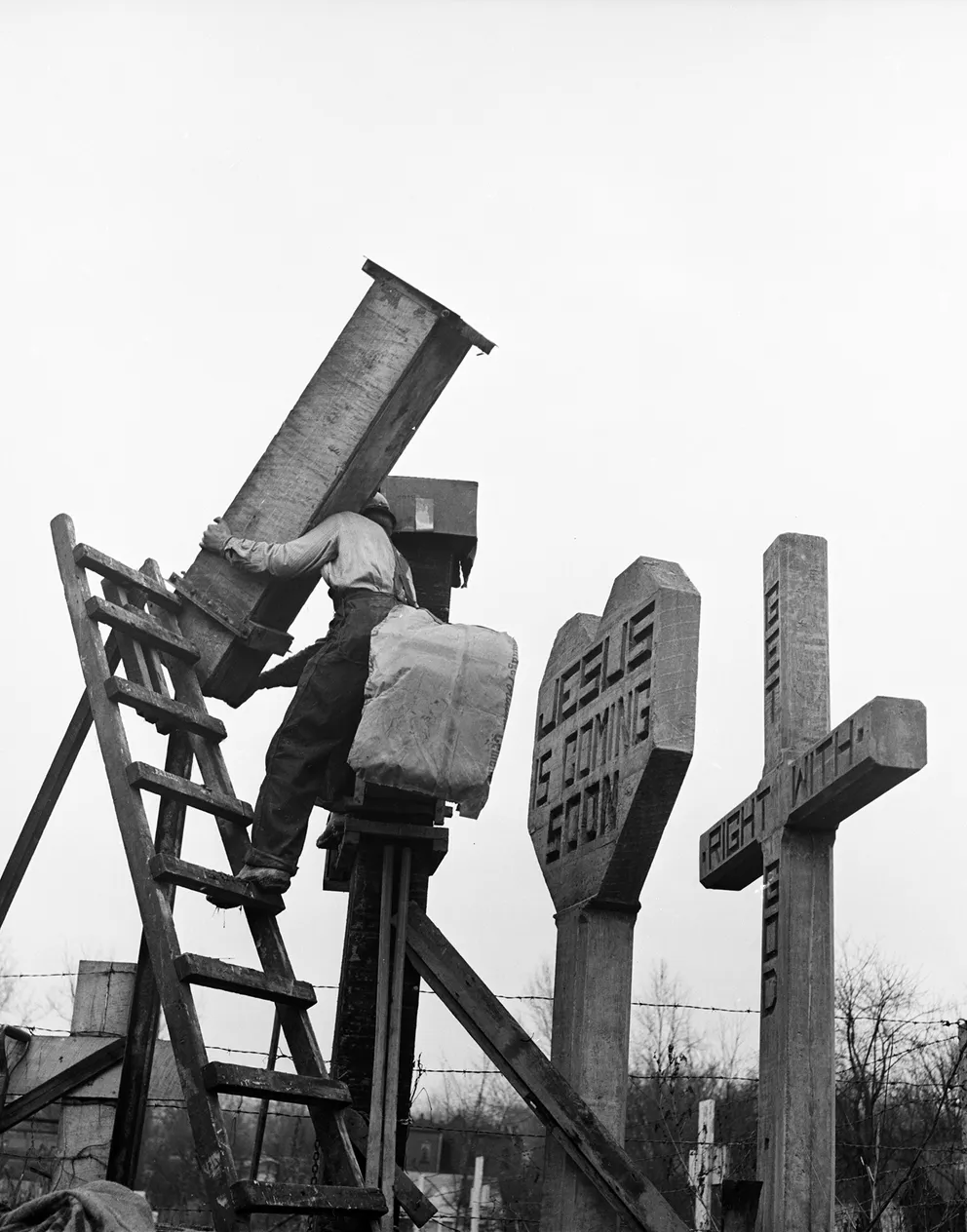 Tabitha Arnold, Mill Town, 2024. Punch-needle-embroidered wool yarn on linen backing, mounted on wood and brass banner poles. Courtesy the artist
Tabitha Arnold, Mill Town, 2024. Punch-needle-embroidered wool yarn on linen backing, mounted on wood and brass banner poles. Courtesy the artistOver the next two years, KMA will organize exhibitions under the thematic framework Appalachian Imaginary, which positions the region as a porous, evolving terrain shaped by myth, material, memory, and migration. With this programming, Kelsie Conley will explore how artists reimagine regional identity, connect to broader cultural movements, and challenge stereotypes. Conley’s curatorial expertise in experimental and evolving practices in the American South informs this program.
The series will begin in September 2025 with Seeds of Regionalism The Clauss Legacy: Early Modernism in the South, curated by architect John L. Sanders with Richard-Allen Foster. Organized in collaboration with Conley, the exhibition examines how Alfred Clauss (b.1906, Munich; d.1998, Swarthmore, PA) and Jane West Clauss (b.1907, Minneapolis; d.2003, Madison, WI) adapted international modernism to East Tennessee’s landscape. In November 2025, The Body is a Drum, The Voice a Song, The Soul a Fire will bring together the work of Tabitha Arnold, Dianna Settles, and Lewis Hine. Arnold’s tapestries weave together a history of labor movements in the Southeast, Settles’s paintings reveal the collective heartbeat of organizing work, and Hine’s photographs capture the daily realities and inequities of industrial labor in early twentieth-century East Tennessee.
Between August and November 2026, a group exhibition will center on the work of Harrison Mayes (b.1898, Fork Ridge, TN; d.1986, Middlesboro, KY), a self-taught artist whose visionary concrete signs were inspired by the coal country of Kentucky. In conversation with Mayes’s legacy, the exhibition will explore concepts of site through the works of approximately fifteen artists, including Sarah M. Rodriguez, St. EOM, and Erin Jane Nelson. Going into 2027, a solo exhibition by Hai Wen-Lin will bring together the artist’s sculptural and performance work with kites and garments. In summer 2027, a group exhibition will focus on the wood-carving technique of whittling as both a timeless tradition and an ever-evolving practice. The exhibition will place contemporary artists working with wood into dialogue with objects whittled long ago.
 Harrison Mayes on January 3, 1949. Courtesy the University of Louisville, Archives & Special Collections. Photo: Barney Cowherd/The Courier-Journal
Harrison Mayes on January 3, 1949. Courtesy the University of Louisville, Archives & Special Collections. Photo: Barney Cowherd/The Courier-Journal